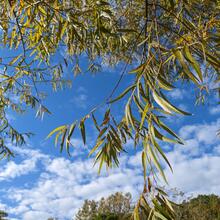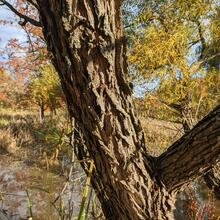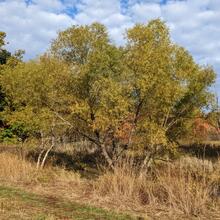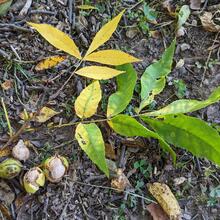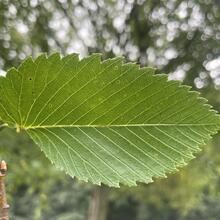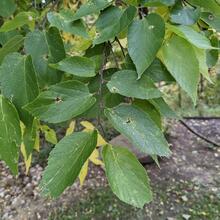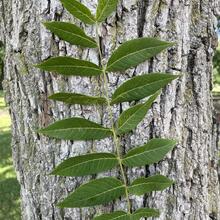Salix nigra
Salicaceae
Multi-trunked tree that can sprout from broken branches. Prefers wetland soils and tolerates permanent flooding. Useful for stream bank stabilization.
Summary
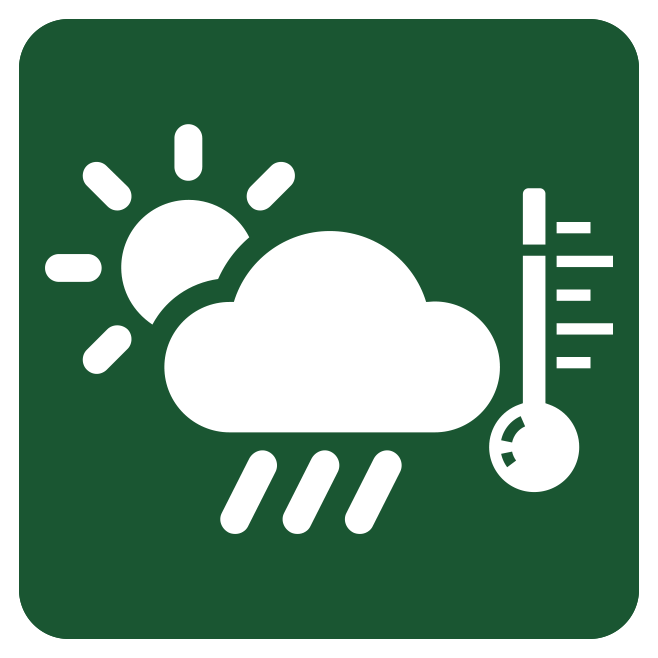 Climate Tolerance
Climate Tolerance
Very Poor
Wildlife Benefits
Nectar/pollen source for bees; buds, seeds food source for birds, squirrels; moth/butterfly host
Pollination Type
Wind
Pollinator
Plant Hardiness Zones
4 to 9
# Butterfly/Moths that use as host
NA
Bloom Time
Spring (Apr-May)
 Shade/Sun Tolerance
Shade/Sun Tolerance
Full Sun to Part Shade: Receives 2 to 6 or more hours of direct sunlight
 Maximum Height
Maximum Height
Large (75-100 ft)
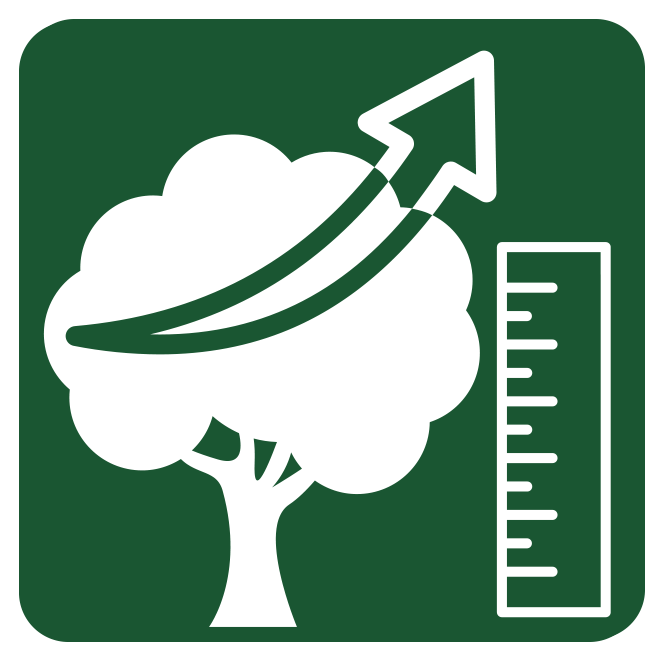 Growth Rate
Growth Rate
Rapid: 2 ft or greater per year
 Soil Type
Soil Type
Clay: Small sized particles. Long moisture retention and low nutrient availability.
Loam: Equal mix of clay, sand, and silt. Moderate moisture retention and high nutrient availability.
Silt: Medium sized particles. Moderate moisture retention and high nutrient availability.
 Soil Moisture Tolerance
Soil Moisture Tolerance
Moist: Soil can remain damp and does not normally retain standing water
Root - Fungal Association
Ectomycorrhizae: Symbiotic relationship with fungi that exist on outside of plant root cells, facilitating nutrient uptake
Pest & Pathogen Risks
Low; Crown gall, sawfly
 Urban Stress Tolerance
Urban Stress Tolerance
Medium: Tree can adapt to a few urban conditions and will generally grow well
Drought Tolerance
Sensitive: Tree will become stressed during periods of drought
Coefficient of Conservatism
2
Native Status
OH-Native: Species is native to Ohio
NatureServe G-rank
G5
Plant Community Type
- Beech Mixed: Absent
- Oak Mixed: Absent
- Alluvial: Occasional
- Red Maple Mixed: Absent
- Ruderal: Absent
- Urban Tree Cover: Common
Bloom Color
Yellow
Form
Tree
 Lifespan
Lifespan
Short: Less than 100 years
Soil pH
Acid-Neutral (pH 4.8-8.0)
Wetland Indicator Status
OBL: Obligate Wetland, almost always occurs in wetlands
Soil Compaction Tolerance
Tolerant: Tree will not become stressed from soil being compacted
Heat Tolerance
Tolerant: Tree will not become stressed for increased temperature due to urban heat island effects
Salt Tolerant
Tolerant: Tolerant to both aerial salt spray and salt present in soil
Native County Status
Cuyahoga
Geauga
Lake
Lorain
Medina
Portage
Summit
IUCN Red List Assessment
Least Concern
